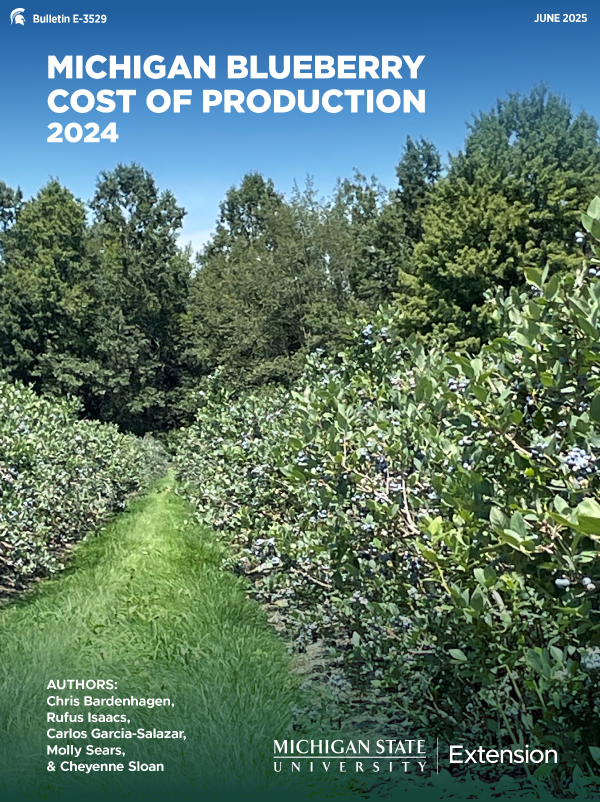
Bulletin E3529
Michigan Blueberry Cost of Production 2024
DOWNLOAD
June 17, 2025 - Chris Bardenhagen, Rufus Isaacs, Carlos Garcia-Salazar, Molly Sears and Cheyenne Sloan
The costs of highbush blueberry production in Michigan topped $10,000 per acre in 2024, with costs nearly matching revenues for the average blueberry field in Michigan. While this means that the average grower in Michigan is operating at an economic breakeven, about $240 per acre for management was included in our budget as a labor cost. This management cost represents income for growers who directly manage their fields.
Annual input costs to grow blueberries, including pruning, fertilizing, and crop protection, make up about 29% of total costs. Harvest-related costs, such as picking and fresh packing, are responsible for nearly 56% of the total costs of production. The remaining 15% of total costs are due to operating interest, land control, and establishment expenses. Field establishment costs for planting and for the nonbearing years are estimated to total $23,956 per acre.
Fixed costs related to machinery and equipment, land, and packing shed overhead comprise at least 12% of total costs. However, we found most production costs to be variable and therefore susceptible to input shocks. For example, skilled and manual labor costs, which have been rising due to higher salary rates for workers, make up around 42% of full production costs.
The blueberry industry is moving toward greater levels of production for the fresh market, with growers selecting cultivars and production techniques for this market. The use of machines for harvesting fresh-oriented blueberries is becoming more common, up to 20% of harvested production. While up to 75% of blueberries may be intended for fresh marketing, weather conditions and sort-outs from the packing line divert many of these to processing/frozen uses, depending on annual conditions. Due to these diversions, the current industry split is approximately 54% fresh and 46% processed.
Many growers are moving toward a high input strategy in order to produce higher profits. Such a strategy often involves the use of improved varieties that provide quality benefits, as well as higher quantities of mulches at planting, foliar feeding, drip irrigation, and other methods to boost yield. The percentages for each major cost and production category are illustrated in Figure 1. The majority of costs are related to harvest and packing (including packing infrastructure).



 Print
Print Email
Email









